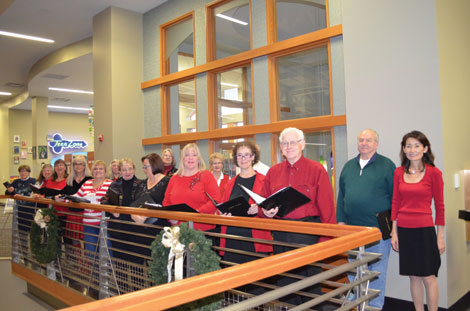Social media sees seniors as fastest-growing audience
 Despite the myth that older people can’t manage technology because of cognitive deficits, seniors are flocking to social media at a rapid pace. In fact, Facebook, Twitter, Google+ (and Hangouts), Pinterest and Instagram all note higher rates among adults 65 and older ─ and see seniors as their fastest-growing audience.
Despite the myth that older people can’t manage technology because of cognitive deficits, seniors are flocking to social media at a rapid pace. In fact, Facebook, Twitter, Google+ (and Hangouts), Pinterest and Instagram all note higher rates among adults 65 and older ─ and see seniors as their fastest-growing audience.
Older adults who have had positive experiences on social media have reported elevated moods. An American Psychological Association study found that seniors who spend time on social media sites were more likely to participate in activities that can lead to greater health, such as cooking healthier recipes and finding easier ways to clean and maintain their homes.
The study also indicates that they have lower blood pressure and fewer instances of diabetes, and less negative health habits such as smoking, depression, or disease. This is attributed to the ability for self-education on any number of topics, and remaining in-the-know about the latest technology trends.
Facebook is particularly useful for linking up with loved ones. It makes for more frequent conversations and helps close the generation gap.
Sharing current photos allows seniors to see their grandchildren change and grow and creates a closeness and involvement that may not have existed, especially if the family isn’t living close by. Video chats also are a great way to communicate in real time. There is also the opportunity to relive fond memories or create new ones through postings of photos and home videos.
When a family lives apart, there can be stress and anxiety on both ends. Social media allows seniors and their families an easy way to check in as often as they wish.
This is especially important if the senior is living alone and may experience ill health, a fall, or may not be eating or sleeping well, taking medications, or getting any form of exercise. Family caregivers can use social media to ask critical questions that will let them know what’s occurring in their loved one’s life.
Feeling connected is very important to any senior’s well-being. Social media allows the senior to make plans with others to meet up outside of the home. It also allows seniors who are unable to leave home to socialize online to combat loneliness.
Even if a senior can’t venture out of the home – due to physical limitations, inability to drive, or inclement weather, for example – he or she can always shop online and enjoy the ease of home delivery. In addition, there are lots of money-saving coupons and online sales, which can be especially convenient and sensible for those who are penny-pinchers or on a fixed income.
Some precautions should be taken. Caregivers may want to monitor a senior’s activities to make sure that the loved one is not falling for phishing scams and the like. Caregivers may also want to make sure they are connecting with trustworthy people – especially if they are conversing in chat rooms and through blogs – and make sure they aren’t overspending on items they don’t need.
AARP’s Social Media Education Center can help you find out about how to use specific (and commonly used) social media websites, apps and blogs. Visit http://www.aarp.org/home-family/personal-technology/tek/social-media-education-center/
Source: Comfort Keepers, a provider of in-home care services. Office locations include Federal Way and Bremerton.
